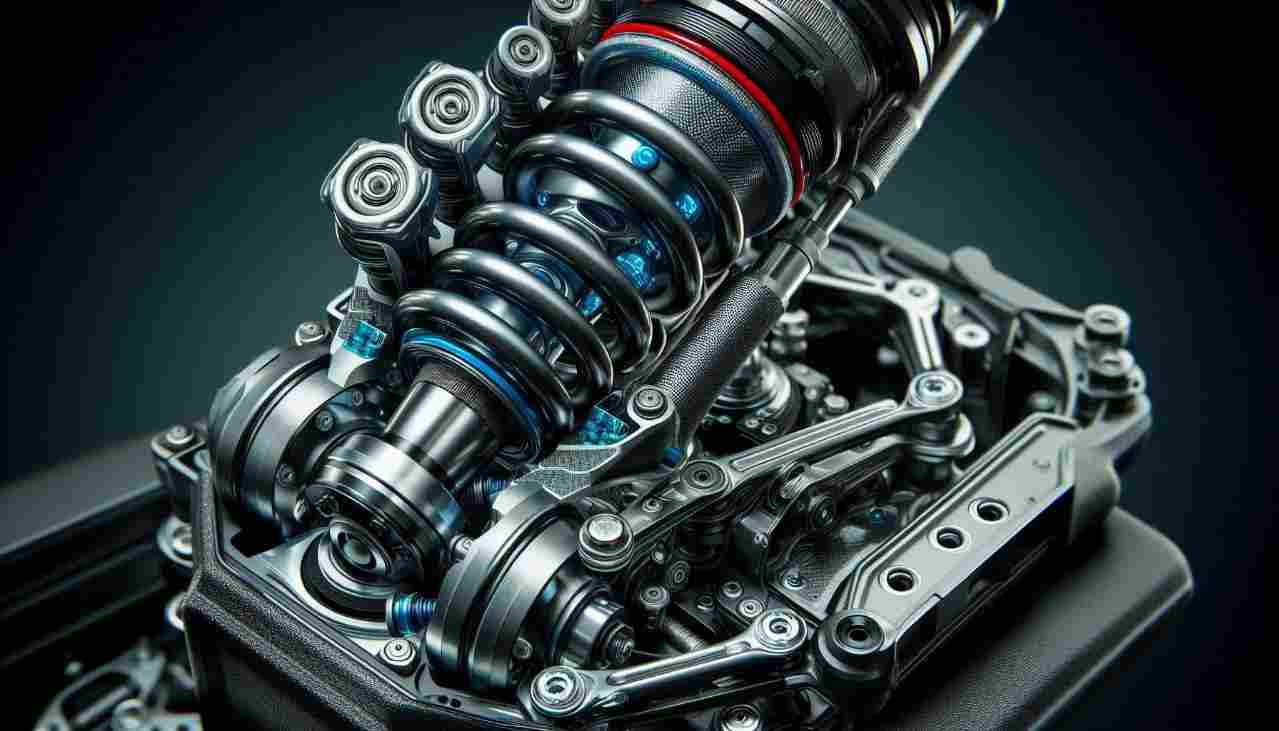When you hear “Lamborghini,” you probably think of speed, style, and that deep, satisfying roar of a V8 engine. But in the Urus, Lamborghini combines power with some seriously advanced tech, including the Adaptive Suspension Technology. This isn’t your regular “bounce-up-and-down” suspension, it’s an engineering marvel designed to keep your ride smooth, your cornering tight, and your passengers asking, “Are we really going this fast?”
What is Adaptive Suspension?

At its core, adaptive suspension allows a vehicle to change its ride height and stiffness based on the road and driving conditions. So, whether you’re on a smooth highway, a winding mountain road, or (dare I say) a dirt path, the Urus is ready to adapt. The suspension system adjusts itself automatically, so it’s like the car has a mind of its own, but don’t worry, it won’t try to take over your life (or at least, not yet).
How Does It Work in the Urus?
The Lamborghini Urus uses a sophisticated air suspension system combined with active damping control. This system is linked to the car’s driving modes—Strada (street), Sport, Corsa (track), and more. In each mode, the adaptive suspension changes to match the demands of the terrain and your driving style. So, if you’re feeling sporty, the suspension will stiffen up for better handling. But if you’re just cruising, it softens for comfort. It’s like having a friend who knows exactly what you’re in the mood for!
Driving Modes and Suspension Adjustments
| Mode | Suspension Behavior |
|---|---|
| Strada | Soft and comfortable for smooth highway rides |
| Sport | Stiffened suspension for responsive handling |
| Corsa | Ultra-stiff for maximum control on the track |
| Terra | Height increased for off-road adventures |
| Neve | Adjusted for stability on snowy surfaces |
These modes allow the Urus to truly become an “anywhere, anytime” vehicle. It’s like a multi-tool in your pocket, but one that can hit 300 km/h.
Adaptive Damping Control

The Urus’s Adaptive Damping Control (ADC) is the real secret sauce here. ADC uses sensors all around the car to monitor road conditions and adjust each shock absorber individually. Imagine your car feeling every bump in the road and thinking, “Hmm, that felt rough, better soften up here.”
Because of this, the Urus doesn’t just give you comfort or performance it gives you both, exactly when you need it. So, you can cruise over potholes without spilling your coffee and take a turn at speed without your heart skipping a beat.
The Science Behind the Smoothness
To understand why the Urus adaptive suspension is so smooth, let’s dive a bit into the mechanics. Air springs are adjustable, which means they can get softer or firmer, higher or lower, depending on the situation. And the active roll stabilization system controls the vehicle’s body roll in corners by keeping it flat, making sure that you don’t feel like you’re about to roll off your seat during a turn. Imagine a waiter balancing a tray of champagne flutes on a roller coaster—that’s the kind of stability we’re talking about.
Key Features of the Adaptive Suspension System
| Feature | Benefit |
|---|---|
| Air Springs | Adjustable ride height and comfort |
| Active Roll Stabilization | Improves cornering stability and control |
| Adaptive Damping Control | Provides real-time adjustments based on road conditions |
| Linked Driving Modes | Ensures suspension matches driving style and terrain |
These features make the Urus’s suspension more than just “adaptive”; it’s downright responsive. Each feature works together to deliver a ride that’s balanced between control and comfort.
Why Adaptive Suspension Matters in an SUV

In an SUV as powerful as the Lamborghini Urus, adaptive suspension isn’t just a nice-to-have—it’s essential. SUVs are naturally taller and heavier, which can make them harder to control at high speeds or on tight turns. But with adaptive suspension, the Urus defies the laws of SUV physics. It corners like a sports car but gives you the comfort of a luxury sedan. It’s basically saying, “I can do it all,” and then proving it.
Questions About Lamborghini Urus Adaptive Suspension
- How does adaptive suspension affect handling on different terrains?
- What role does air suspension play in the Lamborghini Urus?
- Is the adaptive suspension adjustable by the driver?
- How does Adaptive Damping Control (ADC) work in real-time?
- Does adaptive suspension improve fuel efficiency?
FAQ
1. What is adaptive suspension in the Lamborghini Urus?
Adaptive suspension in the Lamborghini Urus allows the vehicle to adjust its ride height and stiffness based on driving conditions, ensuring optimal comfort and control on various terrains.
2. How does Adaptive Damping Control (ADC) work?
ADC uses sensors to monitor road conditions and adjust each shock absorber individually in real-time, providing a smooth and stable ride by adapting to bumps and curves on the road.
3. Does adaptive suspension make the Urus better for off-road driving?
Yes, the adaptive suspension system includes modes like Terra and Neve, which adjust the ride height and damping for rough or snowy terrains, making the Urus versatile enough for off-road adventures.
4. Can I manually adjust the adaptive suspension in the Urus?
The Urus allows you to select driving modes, which then automatically adjust the suspension settings for the best performance in each mode.
5. Does adaptive suspension affect fuel efficiency?
While adaptive suspension primarily focuses on performance and comfort, the smooth ride it provides may contribute to more efficient driving in certain conditions, though it’s not a primary factor for fuel savings.










